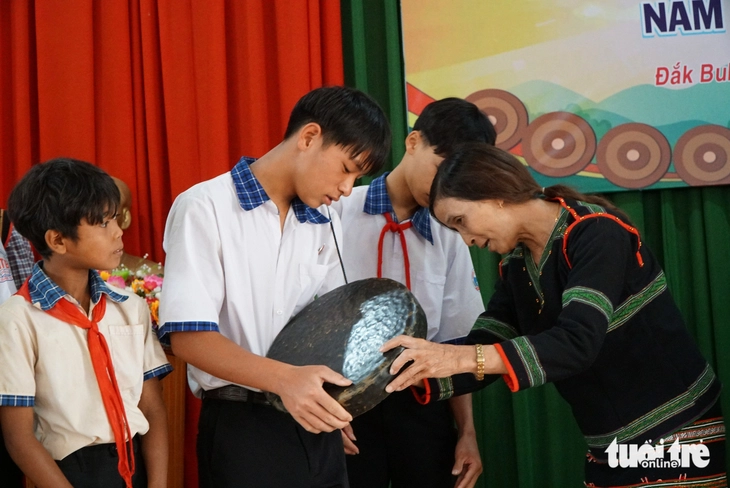
Artisans introduce students to the melodies of the M'nong gong - Photo: DUC LAP
Without a blackboard or white chalk, a special class at Ly Tu Trong Primary and Secondary School (Tuy Duc, Dak Nong) that took place at the end of April (and will continue at some other schools) began with the bustling sound of gongs.
The class resounded with the sound of gongs.
The gongs of the Bon Bu N'Rung artisans welcoming guests resounded, bringing the multi-purpose space into a traditional festival of the M'nong people. Below, more than 500 students attentively, their eyes fascinated, followed each gong beat, dance, listening to the strange yet captivating sound.
At the end of the performance, the deep voice of artist Dieu Thiem rang out.
He introduced the role of gongs in the cultural life of the M'nong people, pointed to each gong, talked about its name, how to play it, and the community spirit associated with each set of gongs.
These introductions help students get closer to the traditional cultural heritage of the nation.
The class became lively when artisan Dieu Thiem approached and asked loudly: "Who wants to try playing the gong?". A series of arms went up. 12 students were chosen to step forward and receive hands-on instruction from the artisan.
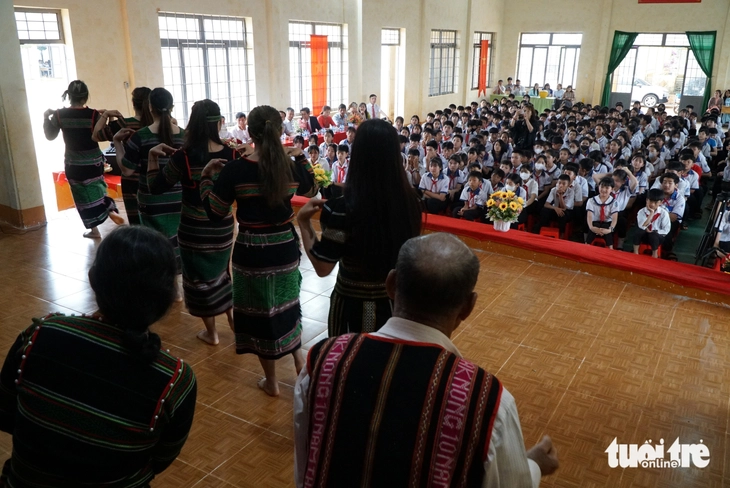
The class started with a gong performance welcoming guests by Bu N'Rung artisans from Dak Buk So commune (Tuy Duc, Dak Nong), which delighted 500 students at Ly Tu Trong Primary and Secondary School - Photo: DUC LAP
Under patient guidance, the children learn how to wear the gong, how to place their hands behind the gong, and how to play each beat. Each movement is carefully guided. No one is criticized for making mistakes. Small mistakes are corrected with laughter and encouragement.
"Gongs are not played like drums. They are instruments of heaven and earth. When playing gongs, one must listen to each other and blend together," artisan Dieu Thiem both instructed and explained.
After the introduction, the students were able to play a simple gong piece together, creating a harmony with many gong sounds blending together. The person keeping the beat was no longer the artist but the student, while the artist stepped back, observed, and adjusted the rhythm. There were times when the gong sounds were not in sync, but they were adjusted promptly. The gong piece ended with the applause and cheers of the whole special class.
The artisans also took time to answer many questions from students about gongs, customs, practices and life associated with gongs in M'nong culture.
Sowing the seeds of love for national culture
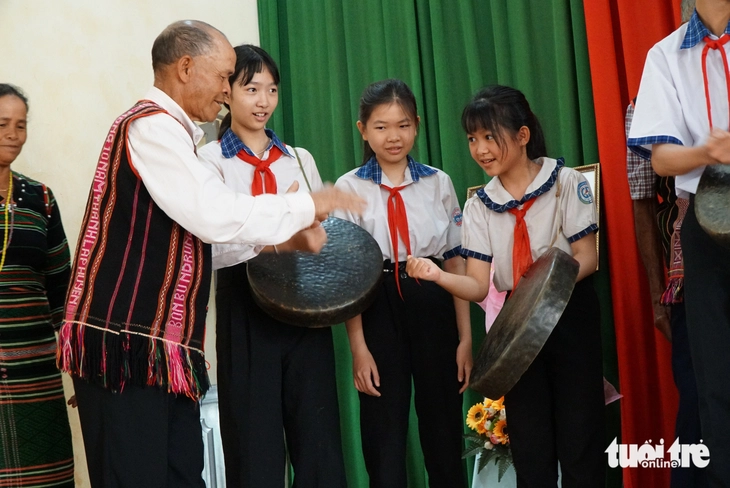
Artisans show students how to strike the gong to create rhythm - Photo: DUC LAP
Among the hundreds of students attending the lesson, Pham Thi Tam Nhu (class 7A) was one of those who expressed clear excitement. "Before, I only knew about gongs through books, newspapers, and television. Today, I got to hold a real gong and receive hands-on instruction from the artisan. I feel very happy," Tam Nhu shared.
For Thi Noi, a 9th grader from Bu N'Rung village, the lesson brought very special emotions. Born into a community with a gong tradition, she is familiar with the sound of gongs in festivals and rituals.
"When I learned to play the gong right at school, I felt very proud and hoped there would be more lessons like this," Noi expressed.

After a period of study, students can play their first gong pieces - Photo: DUC LAP
Ms. Pham Thi Oanh - principal of Ly Tu Trong Primary and Secondary School - said that the school introduced gongs into teaching to arouse cultural pride in students, especially ethnic minority students studying at the school.
"Students do not study for exams but to love, to understand, to preserve identity. School must be the cradle of traditional culture," said Ms. Oanh.
From 2024, Tuy Duc district will begin to bring gongs into schools, so that the heritage is not only present in festivals but also becomes a part of school life, nurturing love for national culture in students.
Tuy Duc currently has more than 13,400 local ethnic minorities, mainly the M'nong. In recent years, the district has restored festivals, maintained gong and dance teams in villages, and organized gong teaching in schools to preserve traditional culture.
Mr. Nguyen Trung Thanh - Head of the Department of Culture, Science and Information of Tuy Duc district - said that gongs living with the community and young people is the most sustainable way to preserve them.
"We expect that by preserving culture, the locality will gradually develop tourism and services," he said.
Source: https://tuoitre.vn/nhung-tiet-hoc-ngoai-khoa-ron-rang-cung-tieng-cong-chieng-m-nong-20250502153556691.htm


![[Photo] Bustling construction at key national traffic construction sites](https://vphoto.vietnam.vn/thumb/1200x675/vietnam/resource/IMAGE/2025/5/2/a99d56a8d6774aeab19bfccd372dc3e9)








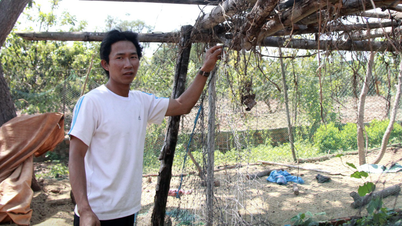












![[Photo] "Lovely" moments on the 30/4 holiday](https://vphoto.vietnam.vn/thumb/1200x675/vietnam/resource/IMAGE/2025/5/1/26d5d698f36b498287397db9e2f9d16c)

![[Photo] Binh Thuan organizes many special festivals on the occasion of April 30 and May 1](https://vphoto.vietnam.vn/thumb/1200x675/vietnam/resource/IMAGE/2025/5/1/5180af1d979642468ef6a3a9755d8d51)
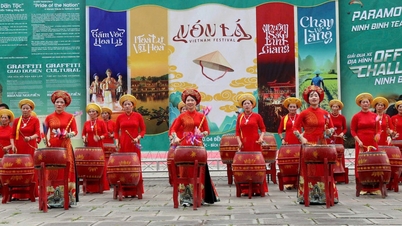







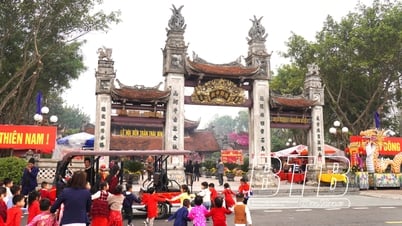






















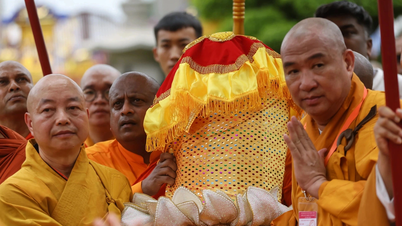

































Comment (0)